Web USB/HID
Introduction
In this section, we will guide you through the creation of a web application.
The instructions for Web USB and Web HID are very similar, with only a few lines to comment out, so this is a combined walkthrough.
This application will connect to your Nano to display the address of a Bitcoin account.
You can easily modify the code, if you want it for Ethereum.
Reference note: the packages referenced here are
Web USB: @ledgerhq/hw-transport-webusb
Web HID: @ledgerhq/hw-transport-webhid.
One-time setup
Make sure you go through the prerequisites.
App Coding (Desktop)
App setup
For this tutorial, the folder will be named example-web-hid-usb, so that it can be used for either Web USB or Web HID.
From your Github folder or favourite examples folder, run:
mkdir example-web-hid-usb
cd example-web-hid-usbInitialize the project by running:
npm initAnswer the questions displayed or by default press enter. There is no incidence on the execution.
Run:
mkdir src
touch src/index.html
touch src/main.jsThe folder will contain these files:
 Fig. 1: File structure
Fig. 1: File structure
Files
Open the folder example-web-hid-usb in an code editor.
index.html
In index.html copy-paste the following code :
<!doctype html>
<html lang="en">
<head>
<meta charset="utf-8" />
<title>My First Embedded App</title>
<script type="module" src="main.js"></script>
</head>
<body id="main"></body>
</html>main.js
In main.js copy-paste the following code:
Comment out or remove the import package you don’t need
(@ledgerhq/hw-transport-webusb or @ledgerhq/hw-transport-webhid)
and the const transport you don’t use.
import "core-js/actual";
import { listen } from "@ledgerhq/logs";
import AppBtc from "@ledgerhq/hw-app-btc";
// Keep this import if you want to use a Ledger Nano S/X/S Plus with the USB protocol and delete the @ledgerhq/hw-transport-webhid import
import TransportWebUSB from "@ledgerhq/hw-transport-webusb";
// Keep this import if you want to use a Ledger Nano S/X/S Plus with the HID protocol and delete the @ledgerhq/hw-transport-webusb import
import TransportWebHID from "@ledgerhq/hw-transport-webhid";
//Display the header in the div which has the ID "main"
const initial =
"<h1>Connect your Nano and open the Bitcoin app. Click anywhere to start...</h1>";
const $main = document.getElementById("main");
$main.innerHTML = initial;
document.body.addEventListener("click", async () => {
$main.innerHTML = initial;
try {
// Keep if you chose the USB protocol
const transport = await TransportWebUSB.create();
// Keep if you chose the HID protocol
const transport = await TransportWebHID.create();
//listen to the events which are sent by the Ledger packages in order to debug the app
listen((log) => console.log(log));
//When the Ledger device connected it is trying to display the bitcoin address
const appBtc = new AppBtc({ transport, currency: "bitcoin" });
const { bitcoinAddress } = await appBtc.getWalletPublicKey(
"44'/0'/0'/0/0",
{ verify: false, format: "legacy" },
);
//Display your bitcoin address on the screen
const h2 = document.createElement("h2");
h2.textContent = bitcoinAddress;
$main.innerHTML = "<h1>Your first Bitcoin address:</h1>";
$main.appendChild(h2);
//Display the address on the Ledger device and ask to verify the address
await appBtc.getWalletPublicKey("44'/0'/0'/0/0", {
format: "legacy",
verify: true,
});
} catch (e) {
//Catch any error thrown and displays it on the screen
const $err = document.createElement("code");
$err.style.color = "#f66";
$err.textContent = String(e.message || e);
$main.appendChild($err);
}
});Dependencies
Installation
Run:
npm install --save core-js
npm install --save @ledgerhq/logs
npm install --save-dev parcel
npm install --save @ledgerhq/hw-app-btc| Package | What does it do? |
|---|---|
| core-js | Modular standard library for JavaScript. |
| @ledgerhq/logs | It provides you the log of all the errors from your connection with your Nano that may appear when developing. |
| parcel | It is a build tool that will help you package your application to run it in the browser. |
| @ledgerhq/hw-app-btc | It will help you ask your Nano to access the Bitcoin address. |
Install the Transport HID or USB package
Then depending on your choice install one of the corresponding packages:
- Install the Ledger package @ledgerhq/hw-transport-webhid which provide you with all the methods to interact with your Nano with an HID connection:
npm install --save @ledgerhq/hw-transport-webhid - Install the Ledger package @ledgerhq/hw-transport-webusb which provide you with all the methods to interact with your Nano with a USB connection:
npm install --save @ledgerhq/hw-transport-webusb
Package.json
Modify "main": "index.js" to "source": "src/index.html".
And ensure you have this line in your package.json:
"scripts": {
"build": "parcel build",
"start": "parcel"
},Add this at the end of the script:
"alias": {
"@ledgerhq/devices": "@ledgerhq/devices/lib-es"
}Your “package.json” should look like this:
In the dependencies section of package.json, comment out or remove the line
you don’t need
(@ledgerhq/hw-transport-webusb or @ledgerhq/hw-transport-webhid)
Do not copy-paste as is, without removing the other line.
{
"name": "update-doc-web-hid-usb",
"version": "1.0.0",
"description": "",
"source": "src/index.html",
"dependencies": {
"@ledgerhq/hw-app-btc": "^10.1.0",
"@ledgerhq/hw-transport-webhid": "^6.28.0",
"@ledgerhq/hw-transport-webusb": "^6.28.4",
"@ledgerhq/logs": "^6.12.0",
"core-js": "^3.33.3"
},
"scripts": {
"build": "parcel build",
"start": "parcel"
},
"devDependencies": {
"buffer": "^6.0.3",
"parcel": "^2.10.3",
"process": "^0.11.10",
"stream-browserify": "^3.0.0"
},
"alias": {
"@ledgerhq/devices": "@ledgerhq/devices/lib-es"
}
}App Launch
1. Start the Server
Now that the Setup is finished, the app has to be built to be displayed. Start the development server:
npm run start2. Launch the App
Now the application is up and running. Open the browser and go to localhost:1234, it will display :
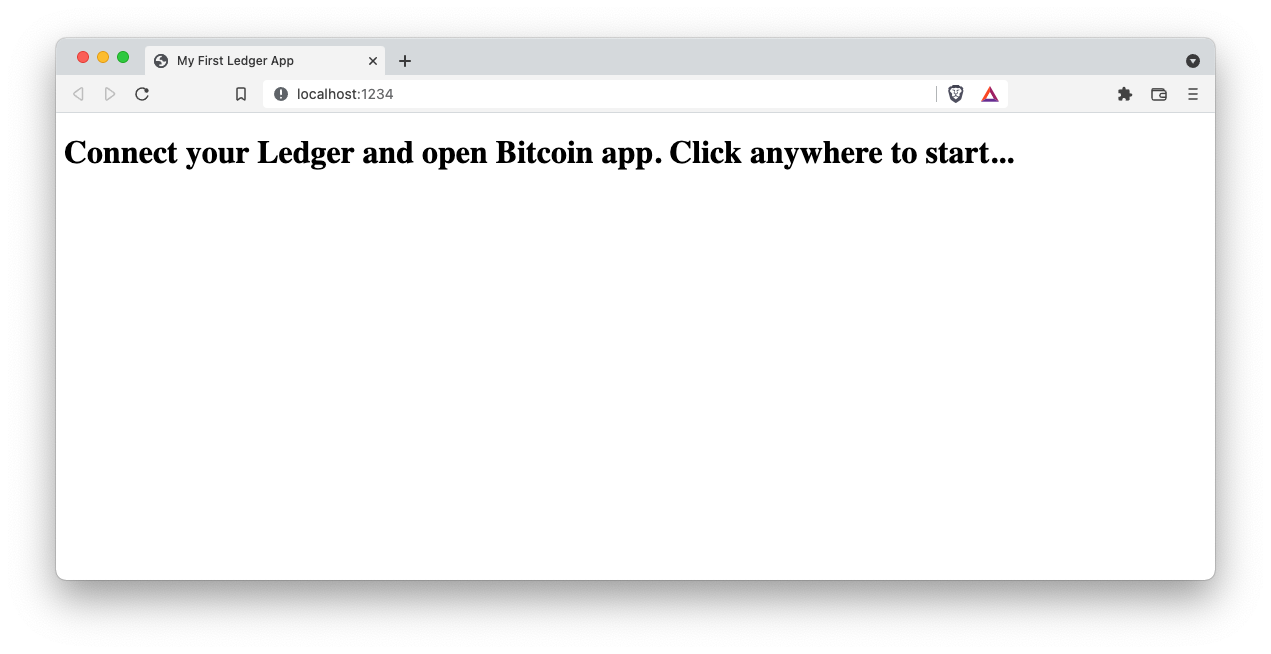 Fig. 3: Application Running on Browser
Fig. 3: Application Running on Browser
Before clicking on the text connect your Nano to the USB port, unlock it and run the bitcoin application. The steps are described below.
3. Plug your Nano
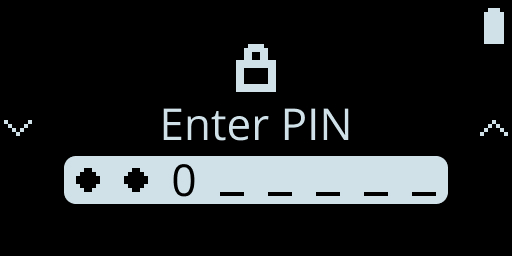

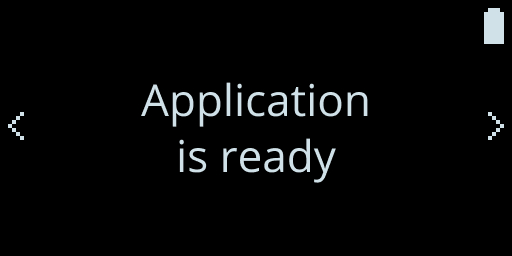
4. Connect the Application
Now you can click on the text and a popup will be prompt. Choose your Nano and click connect:
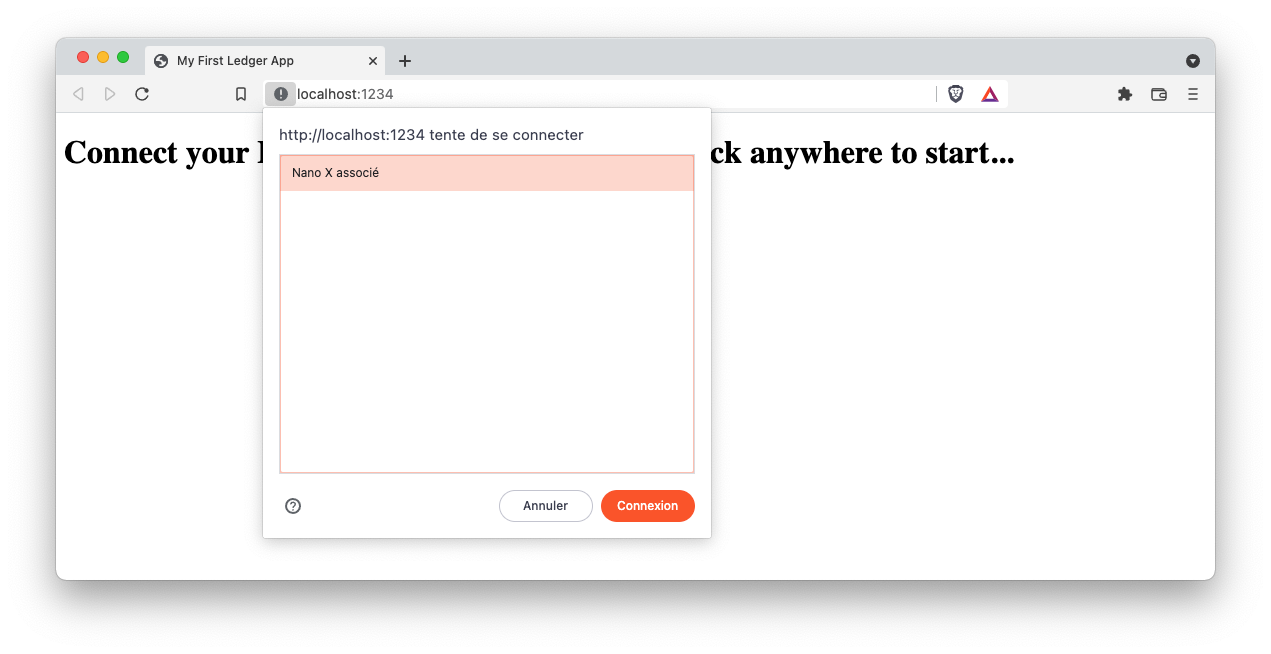 Fig. 7: Connect your Nano
Fig. 7: Connect your Nano
5. Check displayed address
The App gets the Bitcoin address and displays it.
Check that the address displayed on the App is the same as the one displayed on the Ledger device.
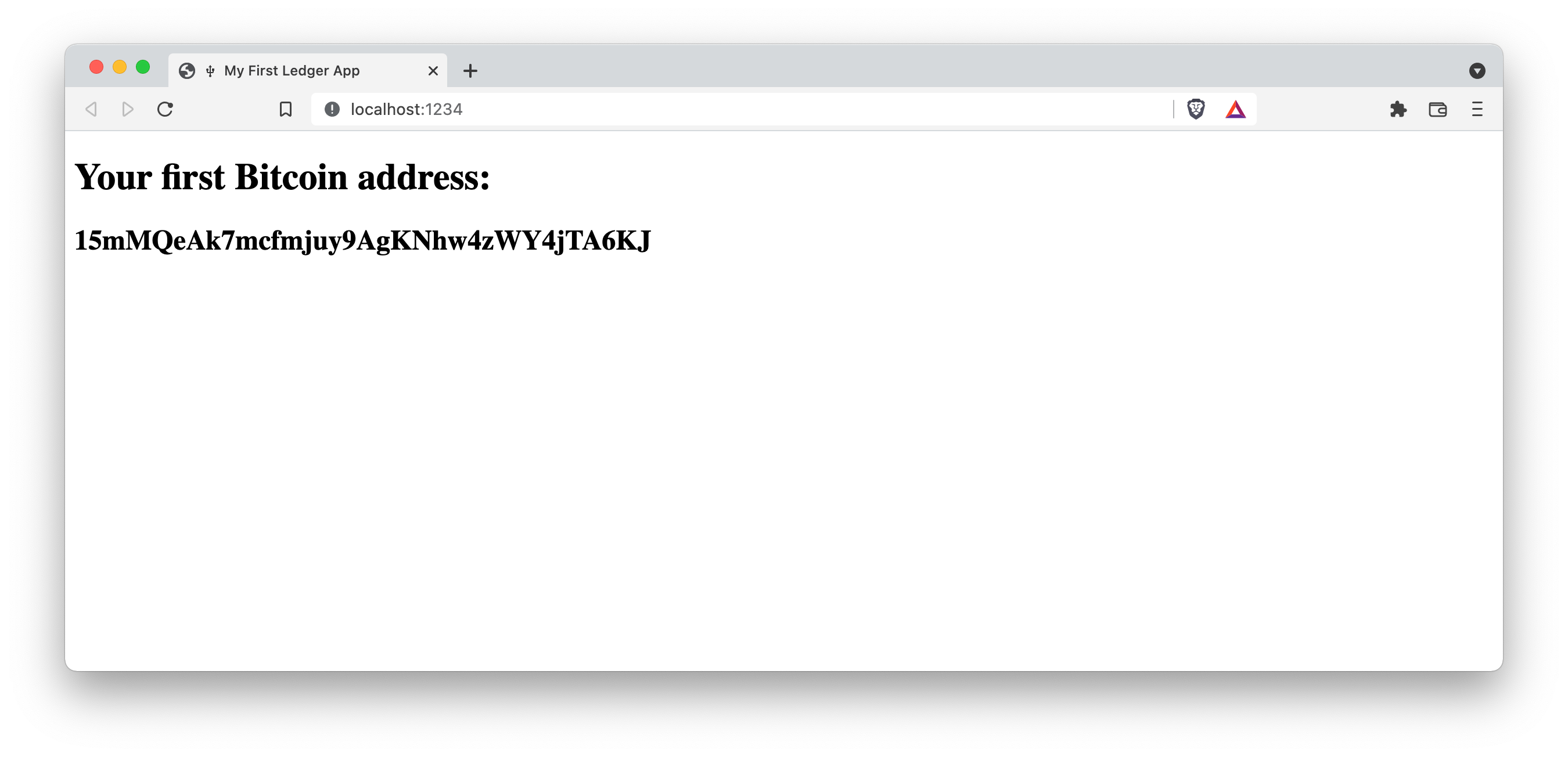 Fig. 8: Address Account Displayed
Fig. 8: Address Account Displayed
Congratulations, you have successfully built your first application connected to a Nano!
Note that if your finalize the operation on your Nano by accepting or rejecting, the corresponding message appears on your web application.
App Coding (Android Chrome)
Android chrome supports HID and USB.
For smartphones, only Android supports web applications.
For Android, only Chrome supports web application.
package.json
To test your application on android, a little change has to be made.
Add the --https flag in your "start" script
In the dependencies section of package.json, comment out or remove the line
you don’t need
(@ledgerhq/hw-transport-webusb or @ledgerhq/hw-transport-webhid)
Do not copy-paste as is, without removing the other line.
{
"name": "example-web-hid-usb",
"version": "1.0.0",
"description": "",
"source": "src/index.html",
"dependencies": {
"@ledgerhq/hw-app-btc": "^6.12.1",
"@ledgerhq/hw-transport-webhid": "^6.11.2",
"@ledgerhq/hw-transport-webusb": "^6.11.2",
"@ledgerhq/logs": "^6.10.0",
"core-js": "^3.20.2"
},
"devDependencies": {
"parcel": "^2.0.0"
},
"scripts": {
"build": "parcel build",
"start": "parcel --https"
},
"author": "",
"license": "ISC"
}The browser will warn that the website is malicious, to continue, click on “advanced settings” and then on “continue to the localhost site”. Now you can test to connect your Nano on your Android.